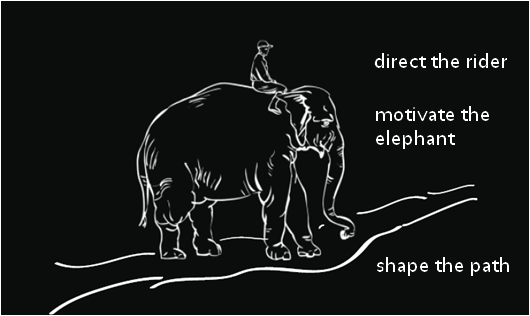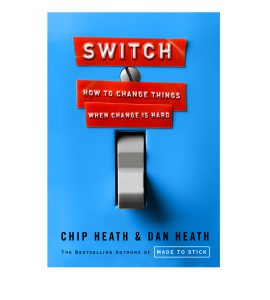
By Michelle Wieber PT, ATC
This is the final part in my series covering my motivation to stay active and strong and live a life I love. In the first part, I discussed the Stockdale paradox and in the second blog I wrote about three simple graphs that motivate me to keep going. In this blog, I will share my hair-brained ideas about how emotions and the decisions we make affect our actions around exercise.
So, I do not have rainbows and smiley faces on my mind every day of my life. I live a sometimes-crazy life of a physical therapist treating patients three days a week, a private practice business owner in a health care industry where all the medical private practices are disappearing (makes me wonder), a mother to three teenagers, a wife of twenty-four years and a hopefully hip high school Sunday School teacher. Needless to say, I may, on occasion, have some emotional swings and exercise drops way down the totem pole in importance. So how can we as emotional creatures continue to stay motivated and continue exercising when life gets to be just a little overwhelming?
I think it has something to do with our limbic system. Newsflash: this has everything to do with the fact that we are not rational actors. A gambler is an excellent example of someone whose economic decisions are irrational. Despite the knowledge that they will lose more than win, a gambler continues at the casino. Despite the knowledge that exercising will help me reach my health and wellness goals, I am tempted to gamble away my work out for the day because I make irrational decisions.
The Elephant and the Rider: Our staff reads a book every year as part of our strategic planning process. Several years ago, we read the book “Switch” which discusses how we as irrational actors make decisions and how we can help ourselves smooth the path and remove obstacles to progress. One of the ideas introduced in the book is that of the elephant and the rider. The rider is the portion of your prefrontal cortex that uses reason and rational thinking to make decisions and the elephant is the emotional center (limbic portion) of your brain. If you have ever seen a picture of a person riding on top of an elephant or if you have ever been to a circus where you have seen this in person, you know that elephants are large and really strong and, in any circumstance, they have the capacity to run away at any moment even with the rider on its back. So what keeps our emotions or our elephants in check most days? According to research on the brain, it’s our ability to recognize that feelings are not always facts. Do you know that there is an entire field of study entitled behavioral economics that uses the idea of the elephant and the rider to manipulate and motivate you into buying certain products and services?
Exercise and the Elephant: Recent research shows that just 10 minutes of aerobic exercise at 50% of your maximum heart rate starts the chemical processes that make endorphins and enkephalins, not to mention some really cool chemicals called C-6 and C-10 which help our body regenerate itself. Yes, I said regenerate. Endorphins and enkephalins are stronger than any opioid prescription drug that you can get from the pharmacy (by the way 30,000 people died from opioid overdose in the US last year). These naturally produced chemicals help with mood elevation and they help with pain reduction. Who doesn’t want to feel better and have less pain? Ten minutes turns on that chemical production like a faucet and more exercise increases the flow of these feel good and move better chemicals without any of the addictive side effects.
So if I just don’t feel like getting up and doing my workout, I think about the fact that my elephant will feel better after I am done and I just get started. It may not be the best exercise session I have ever had, but what matters is that I turned on my feel good faucet and my regenerative chemicals C-6 and C-10 and I am a better human for it.
What does your elephant say about exercise? What do you feel when you think about starting an exercise program? What barriers can you list that keep you from moving forward with your health and wellness goals? Did you know that Ann Dahl the OT at our office is a certified Wellness Coach and can help you find a path to your goals? Did you know that our physical therapists have special training in how to overcome joint stiffness and pain so that you can exercise safely and effectively?
Wieber Physical Therapy is dedicated to helping you find a better way to be active. If you are hoping to get started and need some guidance in how to begin, please call our clinic. We would love to help you get back to doing the things you love.
By Michelle Wieber
Buy Switch: How to Change Things When Change is Hard on Amazon here.




Leave a Reply
You must be logged in to post a comment.